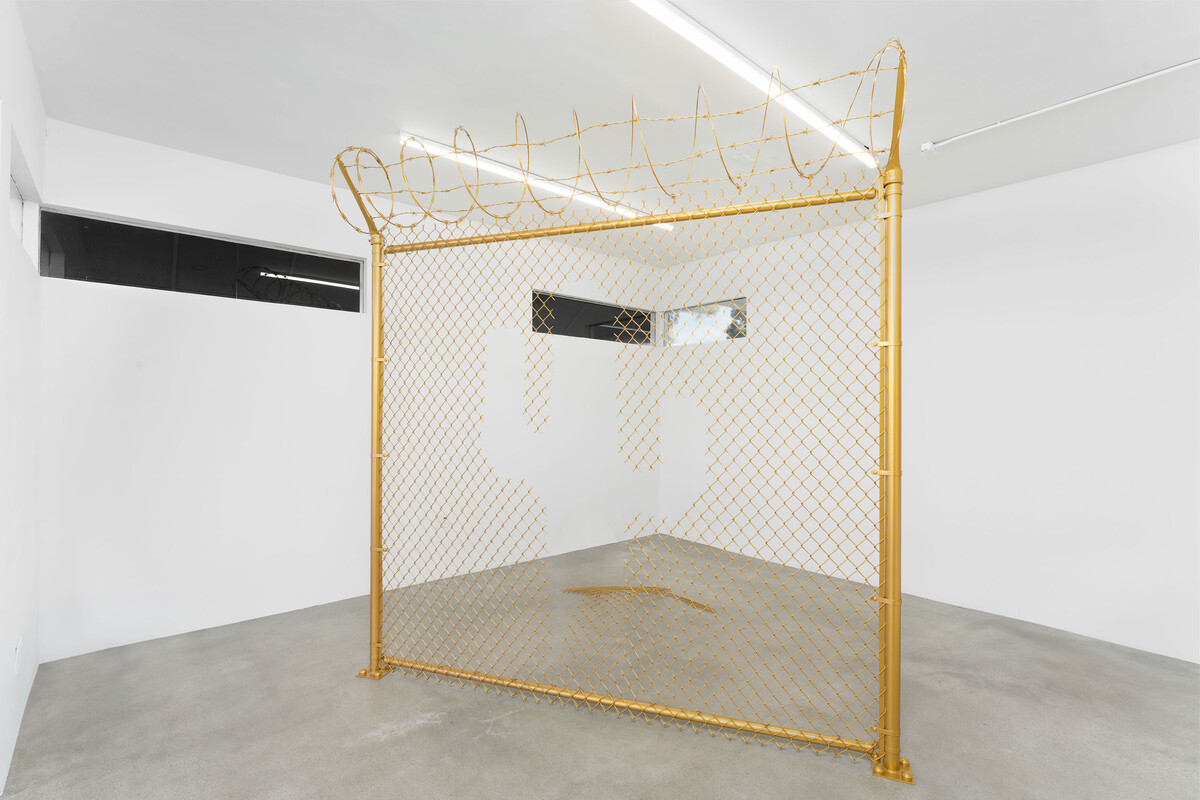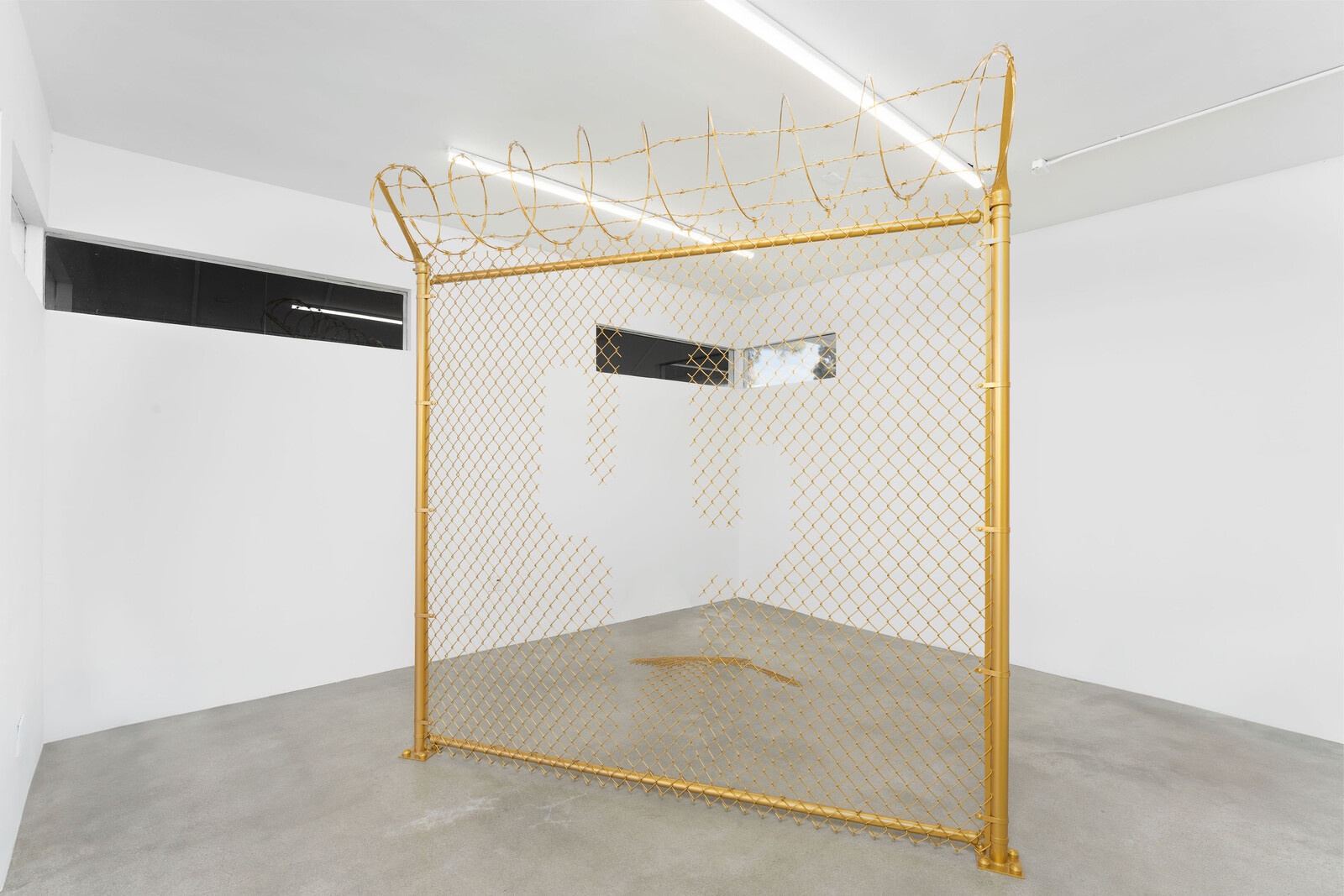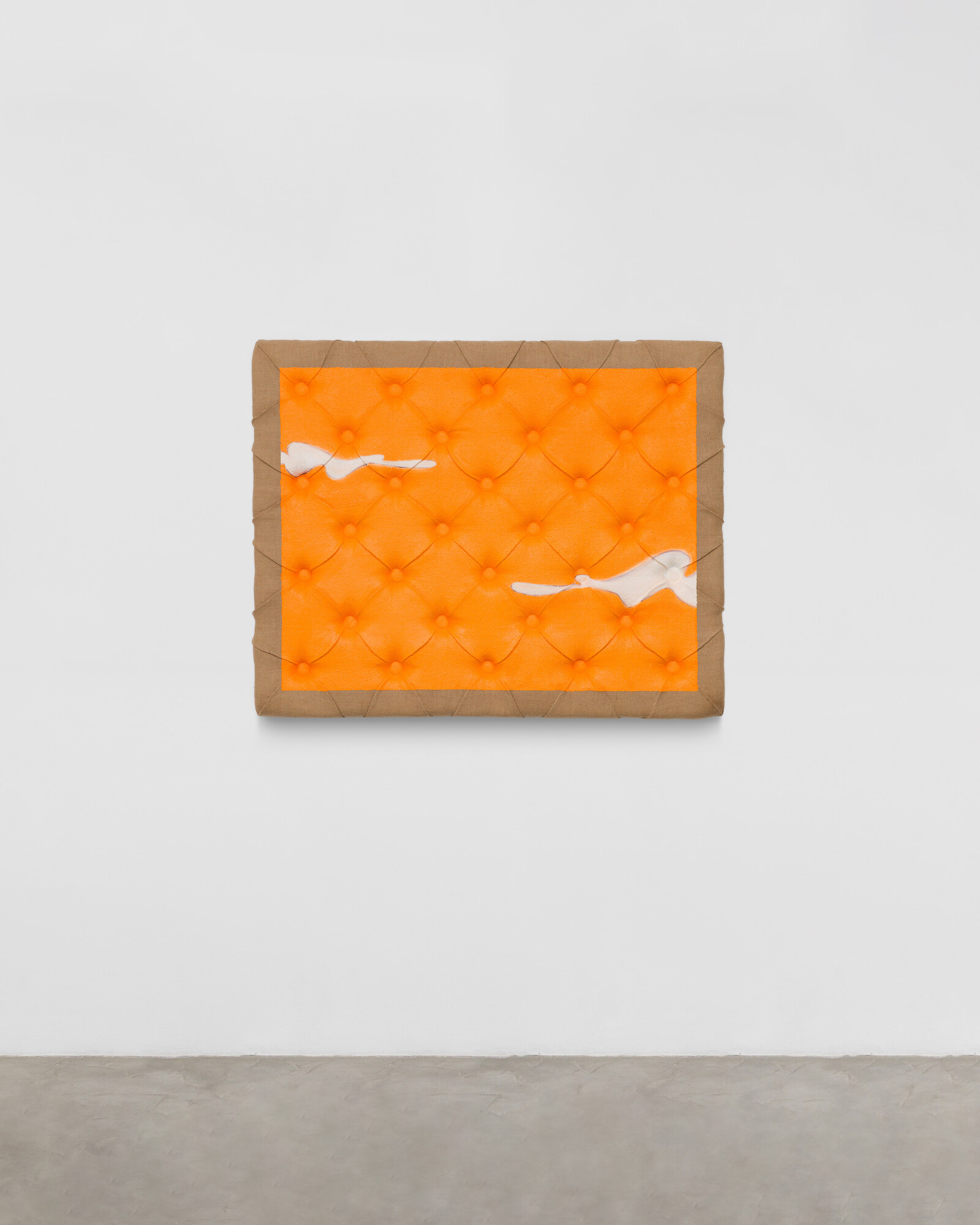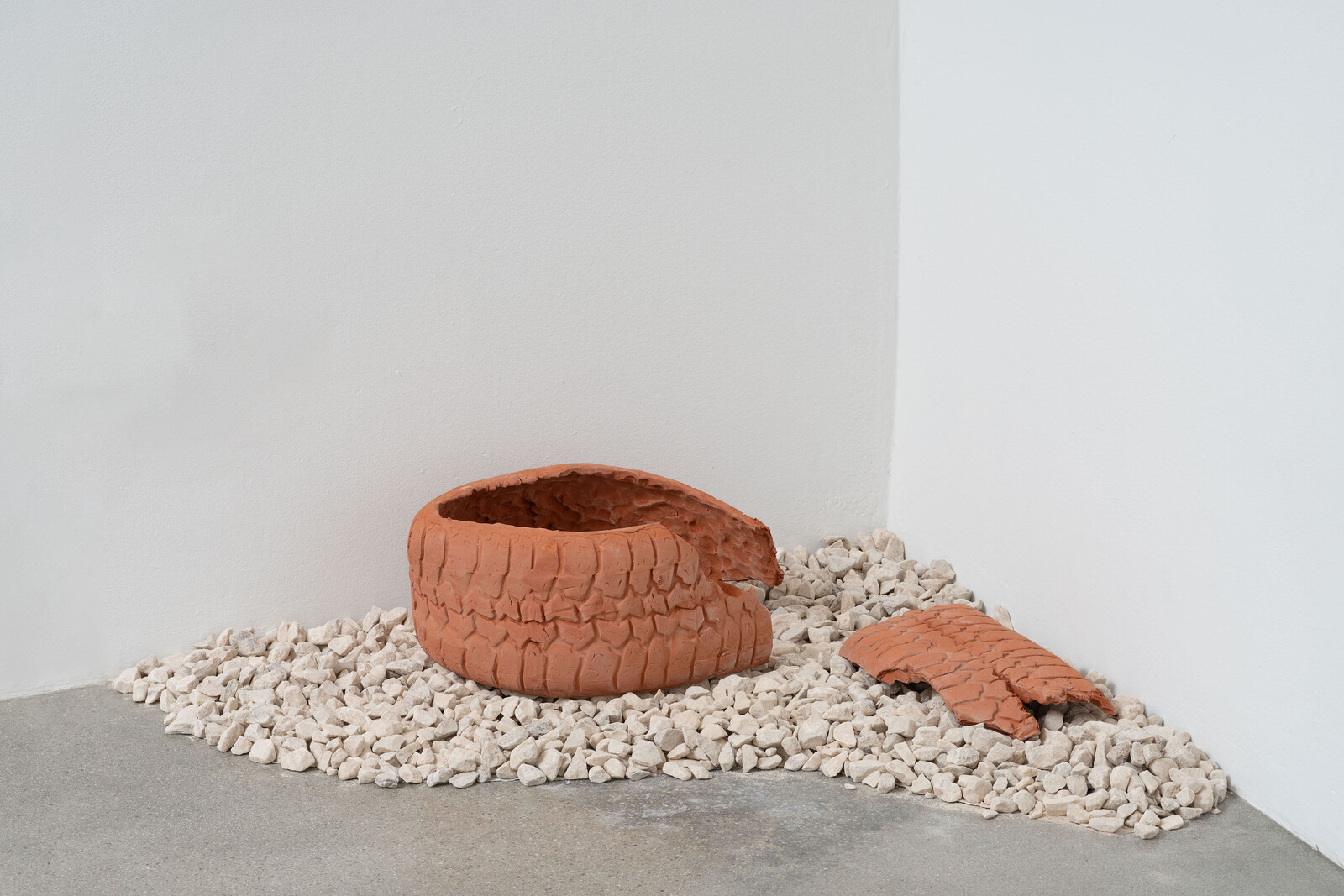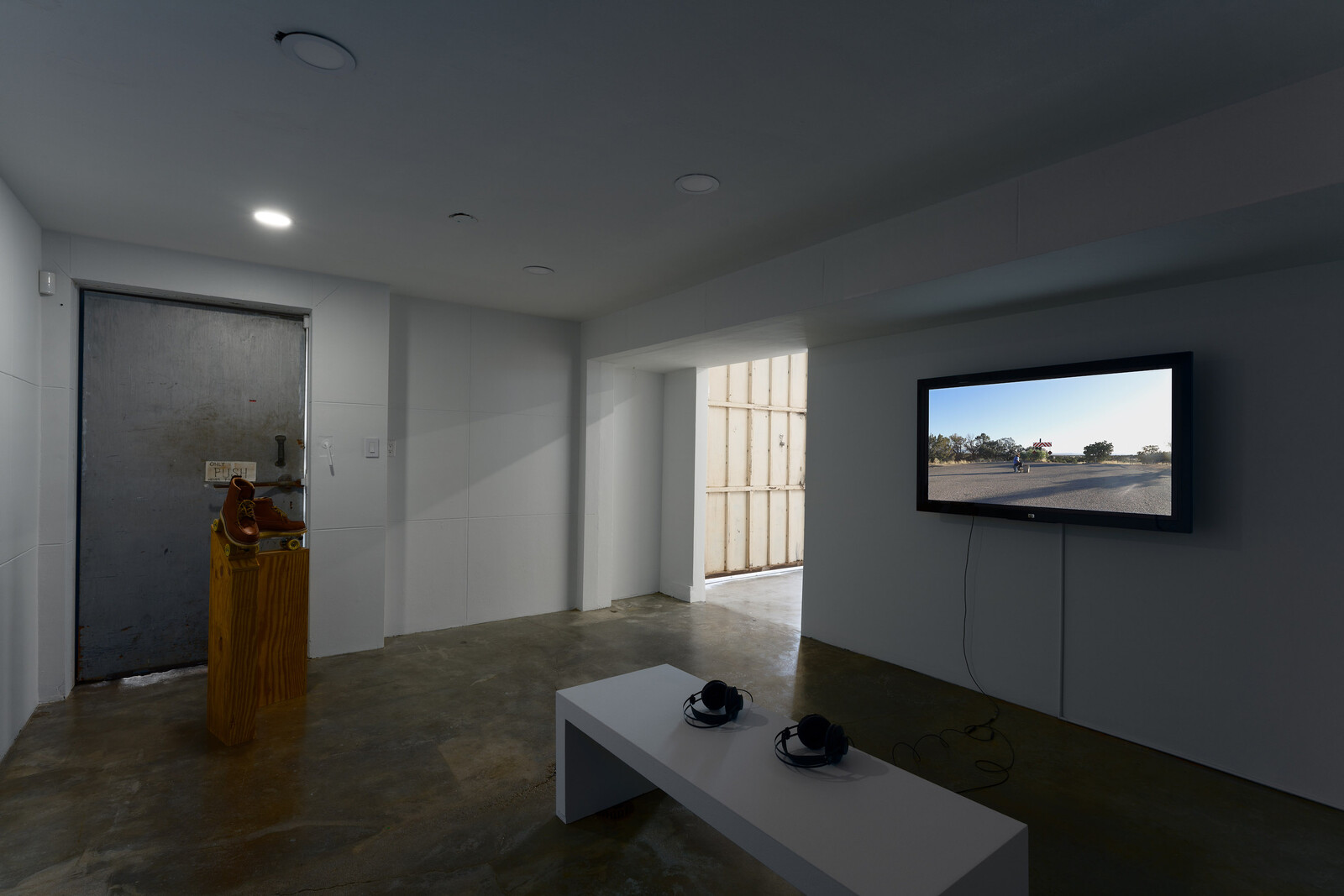With Patrisse Cullors and alexandre ali reza dorriz, noé olivas is a co-founder of the Crenshaw Dairy Mart, a collective and gallery with adjacent studio space dedicated, in their words, “to shifting the trauma-induced conditions of poverty and economic injustice, bridging cultural work and advocacy, and investigating ancestries through the lens of Inglewood and its community.” For a not-inconsequential time after its March 2020 opening and near-simultaneous pandemic-shuttering, it also served as the locus of art supply and food distribution—the latter in collaboration with Lauren Halsey’s Summaeverythang—extending the site’s history as a functioning convenience store. That it sits right under the flight path for Los Angeles International Airport provoked reckoning, from the first, with its imagined audiences alongside those more proximate. The group’s exhibition made in response to the virus, “CARE NOT CAGES: Processing a Pandemic,” lived online; olivas’s mural spelling out the same sentiment blanketed the parking lot as a horizontal billboard visible from above, coming into focus on a jet’s descent. The words function as an incantation but also an indictment, denouncing racial capitalism and the twinning of epidemiological and carceral disaster that the disease exacerbated but did not need to produce.
“Gilded Dreams” follows this initial mandate, or tracks its moves from within. olivas presents new work while summarizing projects spanning at least the past six years, and honoring relationships that point back still further. (In a concrete insistence on intergenerational debt, olivas’s family truck parks outside: an acknowledgment of origins registered as a structuring presence in the artist’s paintings of its seeping oil, among others.) Back in the gallery, the show—presented with support from Charlie James Gallery—is curated in collaboration with olivas’s partner, Ana Briz. The titular Gilded Dreams (2024) bisects the front room, smartly installed as a barrier that is nevertheless askew, torqued from instead of parallel to the entry. A massive powder-coated steel fence shimmering a treacly gold, it stands erect, a looming if punctured lattice wall. Given the modest space, walking around the outsized Gilded Dreams requires hugging the walls: the work wryly re-imagines the phenomenological assault of minimalism, or perhaps ever more to the point, Bruce Nauman’s interrogatory and ritualized engines of entrapment. But where Nauman’s Double Steel Cage Piece (1974) performs the reflexive psycho-somatic stakes of enclosure, olivas insists on particularizing the task-based laborer.
Here perhaps a better comparison is the parallax of material and subject that characterizes Melvin Edwards’s pieces, those formally astute chains and barbed wires that bespeak histories of racism as much as sculpture. For his part, olivas solicits referentiality; the fence—a readymade matrix exquisitely acted upon—redoubles those cleaving the United States border with Mexico, perversely following its cartography into the Pacific. As with related works of the detritus of shredded and coiled tire impressions tucked into corners, Gilded Dreams conjures the landscape of the Southwest (olivas none too subtly pierces the metal scrim with a Looney Tunes-like cut-out of a saguaro cactus, recognizable from Imperial County or the Sonoran Desert). The three terracotta clay Tire Blowout pieces (all 2024), rest on beds of white marble chips, visually analogizing the stuff of regional highways where abandoned tires further contribute to a makeshift salvage economy. In carrying forward work olivas shared in 2022 at the Hammer Museum, these pieces stage reuse differently, under the sign of exhibition-making. So, too, Keep Your Head to the Sky (2024), a wall-anchored tufted burlap panel painted a signal orange monochrome across which two cartoon clouds drift—vapors or maybe exhaust—extends earlier photographs olivas took of television screens of drawn habitats absent the sombrero-donning caricature of Speedy Gonzalez, the racist Loony Tunes cartoon character.
For all the gallows humor, the inner room offers a more somber key. Enshrined there on twin pedestals are a pair of customized roller skates. In the press release, Briz draws on Tomás Ybarra-Frausto in describing a tendency to “urban vernacular rasquachismo,” in objects of utility that are also potential vehicles for liberation. olivas has used these skates in multiple performances, including one that forms the basis for the video, The Great Sprit Will Come Again (2022), filmed by Star Montana, with whom olivas and Briz had traveled to Santa Fe on a research trip to study the James Luna papers that give the work its title. In it, olivas skates to music pumped in on separate audio; accessible on headphones, one may listen in time or decide to honor the distance, allowing the capacity for interiority. He smokes and throws seeds and dances while rolling. The skates are a prop, an emblem and attribute of movement and mobility. In their vicinity, and in sight of the aureate wall, other commissioned performances happened for the show’s opening: robyko’s AR:4[POUR.BLOOD.OF.SPIRIT] engaged ancestry, Marcus Kuiland-Nazario’s BOTANICA/botanica: Resurrection, explored healing within the botanica shop, and Cullors encouraged participants to “practice abolition” by learning how to engage in difficult conversations. In them, olivas staged the necessary relationality of community in the making.
